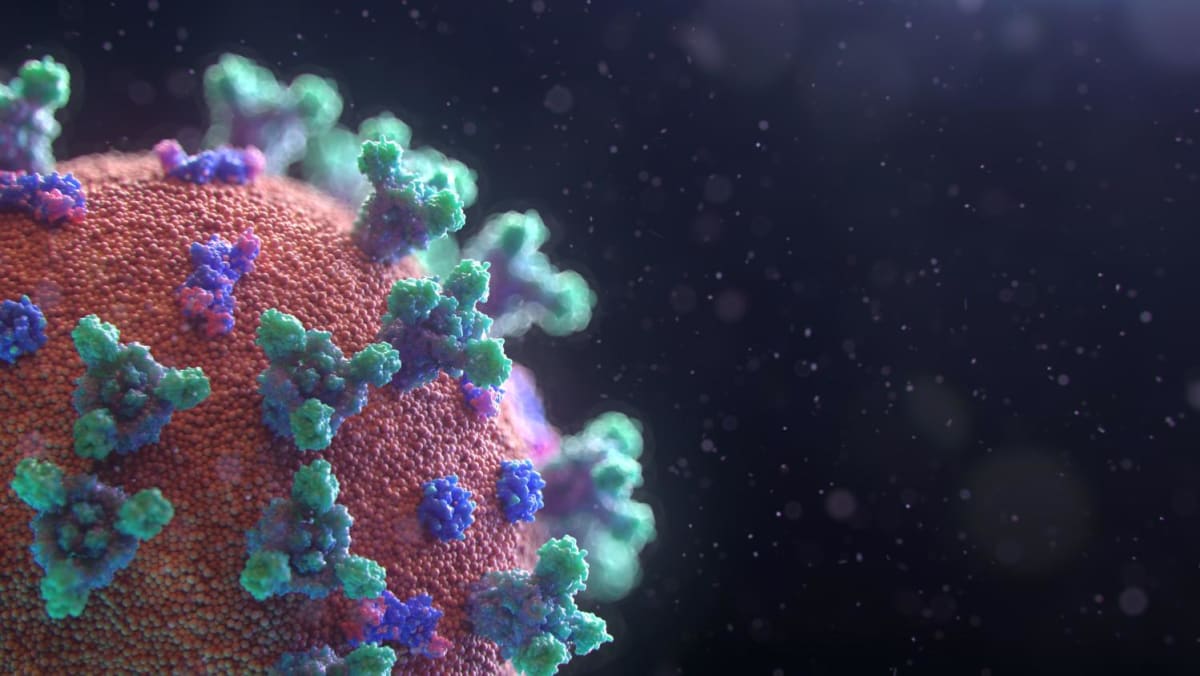
SINGAPORE — A fairly new Covid-19 strain, “JN.1”, that accounts for the vast majority of Singapore’s latest wave of infections, was classified as a “variant of interest” on Tuesday (Dec 19) by the World Health Organization (WHO).
The Ministry of Health (MOH) said last Friday that Singapore recorded an estimated 56,043 Covid-19 cases in the week of Dec 3 to Dec 9, a surge of 75 per cent from the week before that.
The ministry is advising members of the public to wear masks in crowded spaces even if they are not sick, and has opened a second Covid-19 treatment facility to care for Covid-19 patients who do not need intensive hospital care.
Cases have since plateaued over the past week, as the seven-day moving average on Dec 17 was 7,730, down from the 7,870 cases on Dec 12.
In its statement last Friday, MOH said that the vast majority of cases it sees come from the JN.1 strain, though it did not provide an exact figure.
It is the newest strain’s transmissibility that has spurred WHO to treat it as a “variant of interest”.
In a statement on Tuesday, WHO said that the JN.1 strain was tracked as part of its parent strain BA.2.86 — also known as the “pirola” strain and is a variant of interest to WHO.
Although its health risk was assessed to be low, its prevalence globally has spurred the body to classify it as a separate variant.
TODAY speaks to infectious disease experts about the severity of the JN.1 strain, its level of transmissibility and other factors that have led to the latest spike in cases.
SHOULD WE BE WORRIED ABOUT JN.1?
Dr Paul Tambyah, president of the International Society for Infectious Diseases, noted that while JN.1 may be highly transmissible, it is not more severe than earlier variants.
He said that JN.1 has been around “for some time”, with WHO reporting that it had collected the earliest sample of the variant on Aug 25.
“The WHO observation (that JN.1 is not more severe) is confirmed by local Singapore data, which show only a marginal increase in ICU (intensive care unit) occupancy despite the massive rise in the number of reported cases,” said Dr Tambyah.
MOH’s statistics show that the average ICU occupancy for Covid-19 cases was 9.4 from Dec 3 to Dec 9, up from 4.4 the week before that. The number of cases had jumped to 56,043 from 32,035 over the same period.
Dr Leong Hoe Nam, an infectious disease physician at Rophi Clinic, said that the new strain may not be any more severe, but it is “just as miserable” for people who are infected.
“For those who have not been infected for a long time, it tends to be more uncomfortable,” he added.
“For many elderly and those at risk, the next attack can be as miserable or as serious as the last one.”
WHY IS JN.1 SO EASILY SPREAD?
Dr Tambyah said that Singapore’s Covid-19 case spike is most likely fuelled by the evolution of the coronavirus.
“This is known to happen with influenza and common cold (rhinovirus) viruses,” he added.
“The reality is that these viruses are well adapted to avoiding the human immune system… most viruses that have adapted well to humans are constantly evolving to avoid the immune response generated by infection or vaccination.”
Inertia in keeping up-to-date with Covid-19 vaccinations and the growing time since a previous infection have also resulted in the increasing number of cases, the experts said.
Dr Leong said: “In both these cases, the longer it has been, the more likely they will fall sick (because of) the relative lack of immunity.
“Even though there is hybrid immunity, it is not sufficient for this strain because of the multiple mutations since.”
Hybrid immunity is a combination of the effects of past infections and vaccination, which provides stronger immunity against subsequent infections.
Dr Tambyah said that it is not clear if the current Covid-19 vaccines are effective against JN.1, but WHO has said that protection from vaccines that fight the Omicron XBB variant “are likely to be effective”.
WHO said in its Tuesday statement that its technical advisory groups are monitoring this.
“Certainly if the vaccine uptake was much better — like in earlier vaccination rounds — we would see much fewer cases and less hospital admissions,” Dr Leong said.
MOH considers the minimum protection for persons five years and older as three doses of Pfizer-BioNTech (Comirnaty), Moderna-Spikevax or Novavax (Nuvaxovid) vaccines, or four doses of Sinovac.
On its website, the ministry recommends an added dose of the updated vaccine a year after the last dose for people aged 60 years old and above, those who are medically vulnerable and residents of aged care facilities.
WHAT OTHER FACTORS ARE BEHIND THE RISE IN COVID-19 CASES?
Experts told TODAY that besides the new variant, winter conditions in the northern hemisphere and more people choosing not to wear masks have fuelled the increase in Covid-19 cases.
Dr Leong said that more cases are recorded also because people are getting more than one viral infection at once.
“People are more symptomatic because they may be positive for Covid-19, but have another viral infection in the background that is not diagnosed,” he explained.
With a more severe illness, people are more likely to see a doctor or be admitted to hospital. This would cause the recorded number of cases to rise.
Increased travel is another factor, Dr Tambyah said, since travel helps mix and spread different virus strains that have developed in different locations.
On this point, Dr Leong said that this is like any epidemic, where cities and countries better connected with the rest of the world will be the earliest to be hit with an upswing of Covid-19 cases.